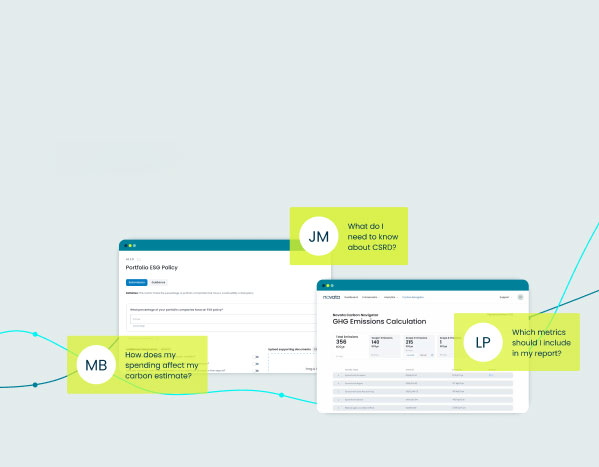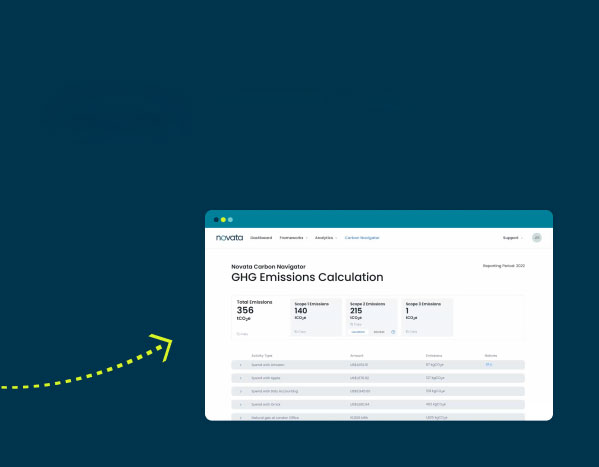For this series of articles on water management, Novata spoke with Gonzalo Muñoz about global trends, opportunities, and risks. Gonzalo, a member of Novata’s ESG Advisory Council, has held several impactful posts, including serving as Chile’s representative to COP25. He is also the co-founder of TriCiclos, an innovative circular economy company based in Santiago.
Water use by organizations is much more than an ESG risk that needs to be tracked and managed. Water is a requirement for all life on Earth. Yet, there are enormous disparities among emerging and industrialized countries (North American and European countries, in particular) for access to potable water. The cultural, political, and economic effects of these disparities are deep, far-reaching, and pivotal issues for everyone.
The most critical issues are water stress, scarcity, and pollution, as well as water as a driver of economic and humanitarian crises, such as mass migration and disease.
Water Scarcity: A Global Problem
More than 1 billion people lack daily access to potable water and 2.7 billion people experience water scarcity for at least 30 days per year. As weather events become less predictable, climate change exacerbates these effects in drier regions and makes long-term water planning more challenging. The consumer staples sector faces a $200 billion annual impact from water scarcity across several industries, including food, agribusiness, and beverages. The consequences of this are higher food costs for consumers that will disproportionately impact families with limited means. Finally, water scarcity will have detrimental effects on the overall health of a population and result in mass migrations, thereby increasing geopolitical risk across borders.
Water use is a multidimensional issue that needs solutions at every level of society.
Water Pollution:
While water scarcity is a major concern, more attention has been given to the issue of water pollution and its impact on biodiversity. Biodiversity loss is the precursor to food chain collapse, which presents risks for all humans. If phytoplankton, algae, plants, and other bacteria begin to die off in aquatic ecosystems due to toxic chemicals, the animals that feed on these organisms become endangered, which can lead to food chain collapse. This sequence of events that causes the collapse of human food chains would then reduce overall food supply – and thereby increase the cost of staple food items.
Pollution that creates biodiversity risk should not be ignored.
Water as a Driver of Other Crises:
Water has far-reaching implications for other crises around the world. According to the World Bank, “water deficits are linked to 10 percent of the increase in total migration within countries between 1970 and 2000. By the end of this century, worsening droughts are projected to affect about 700 million people.” This will be exacerbated by climate shocks and will severely impact regions unprepared for water shortages, which will disproportionately affect lower and middle-income countries. These new migratory patterns will likely lead to more political conflicts among neighboring countries that result in unnecessary violence and oppression. The far-reaching effects underscore the urgency for managing water risk.
Novata asked Gonzalo Muñoz for his thoughts on what are the leading risks related to water quality and scarcity for governments, society and businesses.
Gonzalo:
“While water scarcity has been the leading ESG water-related topic of the past decade, water pollution is where we are seeing the greatest shifts in consumer attitudes, often resulting in regulatory changes. A late 2018 survey of 7,000 consumers across seven European countries regarding plastic packaging, packaging recyclability, and related green policies found that 52% of consumers are boycotting brands over sustainability concerns related to packaging. In my home country of Chile, a law passed in 2018 that banned plastic bags in all forms of retail. It has been the most celebrated environmental legislation in the country’s history. The ban resulted in a significant pollution reduction, as well as cost savings for all retailers in Chile. Most people do not know that plastic packaging is a major contributor to water pollution.
Consumer attitudes are changing because of campaigns such as Greenpeace’s Detox and Dirty Laundry campaign (which targets the apparel sector), and the Break Free From Plastic campaign. Such shifts in attitudes and regulation will challenge the fundamental nature of some industries. The fight against plastic pollution is a case in point. From having minimal impact on the climate just 20 years ago, the production and disposal of plastic now use nearly 14% of all the world’s oil and gas, not to mention the horrific impacts on oceans, lakes, and rivers. Changing regulations and attitudes mean that industries that manufacture and use plastics in their products will need to undergo a business transformation if they wish to thrive while attracting and retaining customers.
For example, Schroders estimated that due to new laws and taxes, beverage companies that fail to reduce reliance on “virgin” plastics (plastics that are made from recycled materials) could see annual profits drop by 5% over the next decade. Meanwhile, consulting firm Accenture estimated that petrochemical demand growth could drop by one third (to about 1.5% a year) if recycling is dramatically improved and legislation reduces the amount of plastic allowed for single-use applications.
Also, community opposition around industrial sites over pollution and water consumption concerns have delivered significantly large financial impacts for firms. Take Barrick Gold’s $8.5 billion Pascua Lama mine, now stranded because of concerns that the company failed to manage its pollution risks sufficiently.”
Consumer-led campaigns have highlighted the issues that businesses directly have on water use, water pollution and how these affect other aspects of the global economy. Pressure from consumers, regulators and other geopolitical events are driving large scale business transformation to deal with water risk. This is critical so that organizations are better equipped to measure and manage the water risk to their organization and society at large. In the second part of this series, we will explore strategies and actions needed from the private sector to better manage water use.






